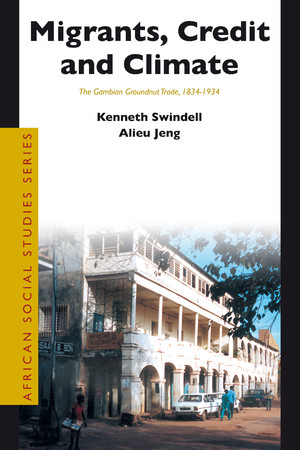Caution! For multiple reasons the stock that we show on the website sometimes differs with the real stock we have in the shop.
Migrants, Credit and Climate
€82.00
After the ending of the Atlantic slave trade West Africa experienced a period of transition to legitimate trade, which provided agricultural staples for the burgeoning European market. One early example was the groundnut trade, which developed along the River Gambia where myriad households grew the crop, which was purchased and transported by the merchant interest. Of crucial importance were pioneer migrant farmers, whose numbers were later swelled by other labour migrants drawn from a wide area. The trade pre-dated colonial partition, and producers were integrated into the international market by extended chains of merchant credit and indebtedness. By the latter part of the 19th century the vagaries of the world market were becoming apparent, as well as the climate, which together affected output and incomes. Colonial rule created conditions for the expansion of the trade, but food supply in the face of groundnut specialization became a fundamental issue and led to experiments with irrigation and mixed farming. In the 20th century the trade was marked by drought, the First World War, credit crises, de-monetization and trade depression, while throughout it remained a migrant driven economy. The book provides an account of the Gambian groundnut trade and the associated environmental, social and economic conditions, as well as commenting on liberal and radical analyses on the shift from the Atlantic slave trade through legitimate trade to colonial rule.
Author: Swindell, Kenneth & Alieu Jeng Year: 2006 ISBN: 9789004140592 Pages: 264 Language: English Publisher: Brill Publisher's city: Bedfordshire Publication date:






